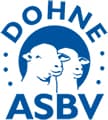SHEEP BREEDERS FROM SOUTH AFRICA, AUSTRALIA, and NEW ZEALAND VISIT SANTA CRUZ (ARGENTINA) MERINO DOHNE STUDS
May 07, 2018
A representative of INTA participated in the International Conference of the Merino Dohne sheep breed, held in Uruguay. The meeting included a tour of the southern area of the Province of Santa Cruz and Chile. Emilio Rivera, of the Rio Gallegos Rural Extension Agency, stressed that “Merino Dohne allows to maintain good production rates of wool and meat in places of low forage value”.

The meeting was attended by producers and technicians from locally, Uruguay, Chile, New Zealand, Australia and South Africa.
A representative of INTA participated in the International Conference of Merino Dohne, which took place last week in Durazno, Eastern Republic of Uruguay. The Tec. Emilio Rivera, of the Rural Extension Agency Rio Gallegos made a presentation on the situation of the breed in Argentina and participated in a tour that included a tour of Uruguayan studs and research centres. In addition, he was part of the organization of a tour of the southern area of Santa Cruz and Chile.
The meeting was attended by producers and technicians from locally, Uruguay, Chile, New Zealand, Australia and South Africa, while representatives from Peru who could not attend participated through written work. The theoretical presentations and meetings were held at the headquarters of the Rural Society of Durazno, one of the most important in the host country.
Rivera commented that “in the presentations and exchanges it was found that the Merino Dohne productively has the capacity to improve the income by the fine tuning of the wool and the high production of meat from the flocks”. “The outlook was very positive, the breed is a good tool in places where forage potential is high, but all the exhibitors stressed that it has a great performance in arid environments such as those of Southern Patagonia,” he said.
Before the start of the Conference in Uruguay, participants toured the region for three days. They visited the establishment Nambí Guasu, in Lavalleja, and the industry Engraw Export Import, producer and exporter of micronajes wool tops in the range of 19.9 to 34.0 microns and the only supplier in the country of tops with Superwash treatment. Later they were at the Experimental Centre of the Uruguayan Lana Secretariat (SUL), where representatives of the organization made a presentation on agricultural production in Uruguay, lines of work in sheep research, selection results for genetic resistance to internal parasites and work in Merino Dohne, they also observed the flock Merino Dohne of the Research Centre. At the end of the tour they visited the studs La Empastada and La Pastoral.
The lectures on the current status of the breed, recent evolution and perspectives in the participating countries were held in the Prediction Site of the Rural Society of Durazno. Among the more than twenty presentations made in two intense days of work can be mentioned Research on ovine genetic resources, first 15 years with Merino Dohne in Uruguay, Main results of SUL work with the Merino Dohne race, The future of Dohne in the industry Australian sheep, The demand for wool and sheep meat: a look at the demographic and economic determinants, Merino Dohne wool markets and – as a closing – a presentation by the World Federation of Merino Dohne Breeders.
Subsequently, South African, Australian, New Zealand, Uruguayan, Chilean and local producers and technicians visited sheep ranches in the southern area of the province of Santa Cruz. On Sunday, April 22, they visited the Estancia Laguna Colorada, where they appreciated different batches of animals; the next day they went to Estancia and Cabaña Coy Aike where they were internalized on the Puro de Pedigree (PDP) campus and attended technical presentations by the head of the ranch and technicians from the Rio Gallegos Rural Extension Agency. On Tuesday, April 24, the tour of our country ended with visits to Cabaña Las Vegas and Estancia and Cabaña Morro Chico, pioneers in the introduction of Merino Dohne in the south of Santa Cruz. The tour continued in Chilean livestock establishments in the Magallanes region.
Rivera commented that “the tour was held at the request of the participants of the conference, who expressed their interest in knowing our region” and stressed that “it was very interesting, because they could internalize the work and see the schools in our region.” “Among the visitors there were many breeders from Australia, a reference country for the import of genetics for South America. Therefore, for us it is essential that they understand our environment and see how their bloodlines perform, “he said. In this regard, he said that it is important that those who sell us their genetics “emphasize rusticity and other aspects that are important for us.”










 Facebook
Facebook YouTube
YouTube Instagram
Instagram